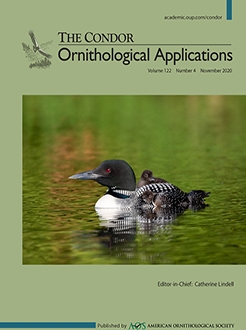Populations of many vertebrates are declining and geographic ranges contracting, largely as a consequence of anthropogenic threats. Many reports of such decline, however, lack the breadth and detail to narrow down its causes. Here we describe population decline in the Common Loon (Gavia immer), a charismatic aquatic bird, based on systematic resighting and measurement of a marked population. During our 27-year investigation, age-adjusted chick mass has fallen by 11%, mortality among young and old chicks has increased by 31% and 82%, respectively, and fledging success has declined by 26%. Meanwhile, the return rate of marked nonbreeders (“floaters”) has plunged by 53%, and the adult population overall has declined by 22%. Consistent with the thinning ranks of floaters, the rate of territory eviction has decreased by 52% during the study. Despite the decline in floaters, territory occupancy remains unchanged. However, a matrix model, updated with recent estimates for breeding success, juvenile survival, and senescence, yields a recalculated deterministic population growth rate (λ) of 0.94 for our study population, which suggests that declines in vital rates could lead to a loss of 52% of the current population and a decline of 37% in territory occupancy by 2031. Lack of data on floaters in other upper Midwest and New England loon populations leaves their status in doubt.
LAY SUMMARY
The adult loon population in northern Wisconsin has declined by 22% over the past 27 years.
Numbers of chicks and chick mass have declined significantly.
The population of young nonbreeders (floaters) has plummeted by 46%.
Despite these steep declines, there has been no measurable drop in the number of territorial pairs.
The hidden nature of the Wisconsin decline points out that floater populations can mask major drops in breeding populations and throws into question population trends in other loon populations, whose floater populations are largely unknown.






